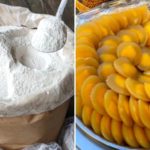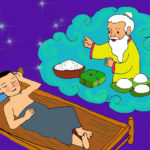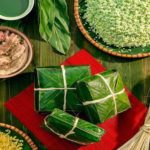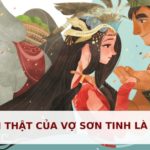There is a cake that many people often confuse the name of as “banh giay” in Vietnamese. Nowadays, there are many different names for this cake, so which one is correct: “banh giay” or “banh day”? Let’s find out together.
1 What is Banh Giay or Banh Day?
Banh Giay is a traditional cake of the Vietnamese people to express the gratitude of descendants to their ancestors and the land and country and is often offered on the death anniversary of Hung Kings.
The cake is round and flat, usually made from sticky rice that is finely ground, and can have green bean and coconut fillings to create a sweet or savory taste. Banh Giay from Gau Village in Pho Hien (Van Giang, Hung Yen) and Banh Giay Quan Ganh (Nhi Khe, Thuong Tin, Ha Tay) are the two most famous and characteristic Banh Giay-making regions in Northern Vietnam.
For further reference:
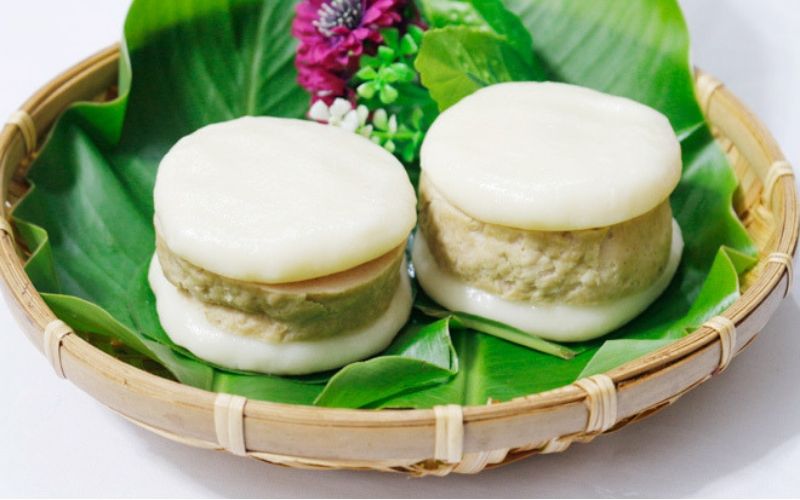 What is Banh Giay?
What is Banh Giay?
2 The Legend of Banh Chung and Banh Giay
According to ancient tales, during the reign of the sixth Hung King, the king wanted to choose his successor through a spring feast. He gathered his children and asked them to choose delicious and unique dishes to offer to their ancestors.
The eighteenth prince, Tiet Lieu, was kind, gentle, and filial. As he lost his mother at a young age, he was favored and taught by a deity. This deity taught him about the value of rice and how to use the image of the cake to symbolize heaven and earth and the gratitude towards parents.
Tiet Lieu followed the deity’s instructions and created Banh Chung and Banh Giay to offer during the ancestral worship. After hearing about the deity’s dream and the meaning of the cakes, the king was delighted and chose to pass the throne to Tiet Lieu.
Since then, the Vietnamese people have had the custom of making Banh Chung and Banh Giay to offer to their ancestors and heaven and earth during the Lunar New Year.
For further reference:
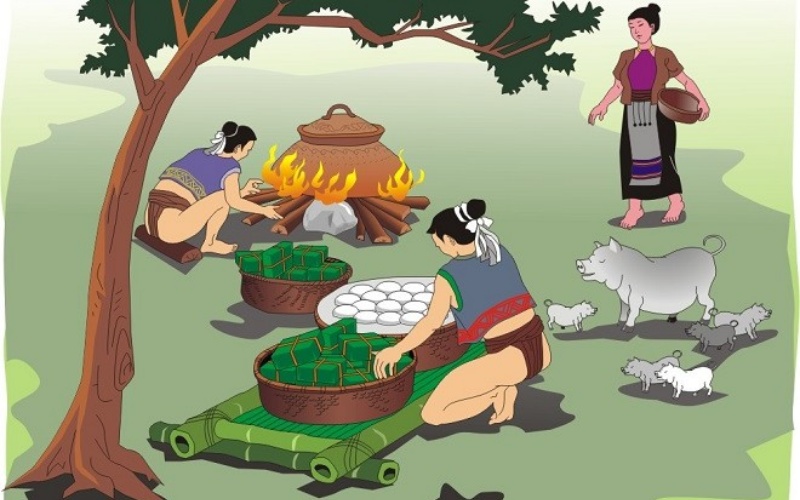 The Legend of Banh Chung and Banh Giay
The Legend of Banh Chung and Banh Giay
3 Is it Banh Giay or Banh Day?
Views of Language Experts
According to linguist Tran Chut (vice principal of Van Hien University), he stated: “‘Banh giay’ is a transformed pronunciation of the ancient Vietnamese word ‘banh chi’. In the past, ‘ch’ later changed to ‘gi’, and ‘i’ changed to ‘ay’. Therefore, writing ‘banh giay’ is correct.”
In addition, Professor Nguyen Duc Dan (University of Social Sciences and Humanities, Vietnam National University, Ho Chi Minh City) also stated: “‘Banh giay’ is the correct form according to Vietnamese dictionaries,” and Professor Nguyen Duc Ton, Director of the Institute of Linguistics, shares the same opinion that only the spelling “banh giay” is correct, and there are no alternative spellings.
 Language experts assert that “banh giay” is the correct spelling.
Language experts assert that “banh giay” is the correct spelling.
According to Vietnamese Dictionaries
Some Vietnamese dictionaries also support this view. According to the Illustrated and Associative Vietnamese Dictionary by author Nguyen Van Dam, published by Van Hoa – Thong Tin Publishing House, Banh Giay means: a cake made by pounding sticky rice very finely. The Dictionary of the Vietnamese Language by authors Minh Tan, Thanh Nghi, and Xuan Lam, published by Thanh Hoa Publishing House, defines Banh Giay as: “a cake made by pounding sticky rice very finely and shaping it into a flat, round shape, sometimes with a mung bean filling.”
The Comprehensive Dictionary of the Vietnamese Language by author Nguyen Nhu Y, published by Van Hoa – Thong Tin Publishing House, also explains: “Banh Giay is a white, round, and very sticky cake with a smooth surface. It is made by pounding white sticky rice and is usually served with pork pie…” The dictionary only recognizes the term “banh giay” and does not include any alternative spellings.
 Vietnamese dictionaries only recognize the term “banh giay.”
Vietnamese dictionaries only recognize the term “banh giay.”
Reference:
However, when referring to “Banh Day,” “Banh Giay,” or “Banh Day,” “Banh Giay,” people will understand that you are talking about the name of a delicious traditional cake of our country from the legend of Lang Lieu. But in writing, we need to research carefully to know the correct spelling of Vietnamese words and avoid variations. So, according to linguists, the correct spelling is “Banh Giay.” Let’s remember this, everyone!
Real name of Son Tinh’s wife – What is it? It’s not Mị Nương as many people think.
The legend of Son Tinh and Thuy Tinh revolves around the story of King Hung, who chose a groom for Princess Mi Nuong with a marriage requirement including a nine-ivory elephant, a nine-spur chicken, and a nine-silk mane horse. While everyone knows this, very few people know the true name of Princess Mi Nuong.

























